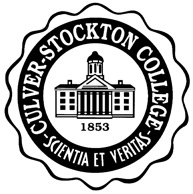Below is a summary of the abstract you submitted. Presenting author(s) is shown in bold.
If any changes need to be made, you can modify the abstract or change the authors.
You can also download a .docx version of this abstract.
If there are any problems, please email Dan at dar78@pitt.edu and he'll take care of them!
This abstract was last modified on March 28, 2024 at 10:52 a.m..

The novel bacteriophage JDog was discovered in 2023 through the Genomics Research course at Culver-Stockton College, in conjunction with the SEAPhages program. JDog is a lytic phage collected from soil in Fruitland, Iowa that was isolated and purified three times using the host Mycobacterium smegmatis Mc²155. JDog produced clear plaques about 4 mm in size. The phage was amplified to increase the amount used for transmission electron microscopy and DNA extraction. JDog’s morphotype is Siphoviridae with a length averaging 347.25 nanometers. The Illumina sequencing showed that the genome has 68,613 base pairs and a GC content of 66.4%. JDog is a member of cluster B phages and is a subcluster B1 phage. The auto-annotation done by Glimmer and Genemark and shown in DNA Master resulted in 100 predicted protein-coding genes. Each predicted gene was manually annotated to verify the gene, identify the correct start site, and assign a possible function. The programs used for annotation include Phamerator, Starterator, PhagesDB, HHpred, DNA Master, PhageDB BlastP, NCBI, TMHMM, Aragorn, tRNA-SE, SEAPhages Bioinformatics Guide, SEAphages Cluster Specific Annotations, and Official Function List. No tRNAs or tmRNAs found. Some of the gene annotations found were portal protein, terminase, capsid maturation, scaffolding protein, major capsid proteins, lysin A, holin, major tail, minor tail, and tape measure. It was also found that B cluster phages do not have a tail assembly chaperone. Bacteriophages are found around the world and have been used to treat bacterial infections, but they are not well known because this treatment is still in the early stages of research. The discovery of new phages will improve research and make advances in medicine.
